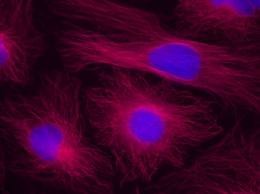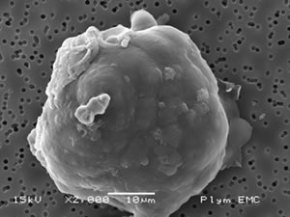Scientists have developed a new way of testing the safety of natural and synthetic chemicals. Their research could reduce the number of fish needed to test the toxicity of many chemicals including pharmaceuticals and environmental pollutants.
The scientists have succeed to coax the cells from the liver of a rainbow trout to form a ball-shaped structure in a petri dish. The ball-shaped structure also called spheroid behaves much more like normal animal tissue than cells that have been grown in traditional ways in the lab and thus the spheroid of cells give the researchers a more accurate picture of how an animal’s body would respond to a chemical in the environment.
Fish are used to test if chemicals can damage wildlife or the environment. Because a large number of spheroids can be produced from a single fish the use of this technique could mean less fish are needed to do these tests. Nowadays people are very concerned about environmental pollution, health of people and animal testing. Thus it’s important that we understand the effect of chemicals in the environment but we must avoid the use of animal testing and the technique described reduces the number of fish needed for toxicology testing.
The fish spheroids can be maintained in the lab for over a month which is important because scientists can test the effects of long-term exposure because environmental pollutants accumulate over time and become more concentrated further up the food chain and that is why they cause health problems.
Spheroid cells are much better than flat layer cells because flat layers break down quickly and they do not behave like real tissues. This is the first time that scientists have developed spheroid cells from fish but spheroid cells are already well used models for testing mammalian cells.
The liver filters blood and that’s why it’s the main organ where potential environmental toxins accumulate and are broken down by the body and thus it’s the most important organ for testing toxicity. Scientists hope to develop a “virtual fish” by combining fish spheroid cells from liver and gill in a single system. The gills are another important site of toxin accumulation.
By Krista Kiuru, Samuli Saastamoinen and Niclas Österlund
Source: http://www.sciencedaily.com/releases/2012/06/120629142525.htm



This sounds very promising. In my opinion, it would be better to use test animals as little as posibble and these kinds of innovations can make it possible. Hopefully this method can be used widely so that the fish wouldn’t need to suffer.
-Sari
It’s always nice to read about actual concrete things that are already happening (or at least almost) instead of things that are more theoretical than anything, like most nanotech things are. Also, anything that reduces the amount of animals used for testing things is positive in my eyes. 🙂
The text itself was a pleasure to read, as well. 🙂
~Tuuli